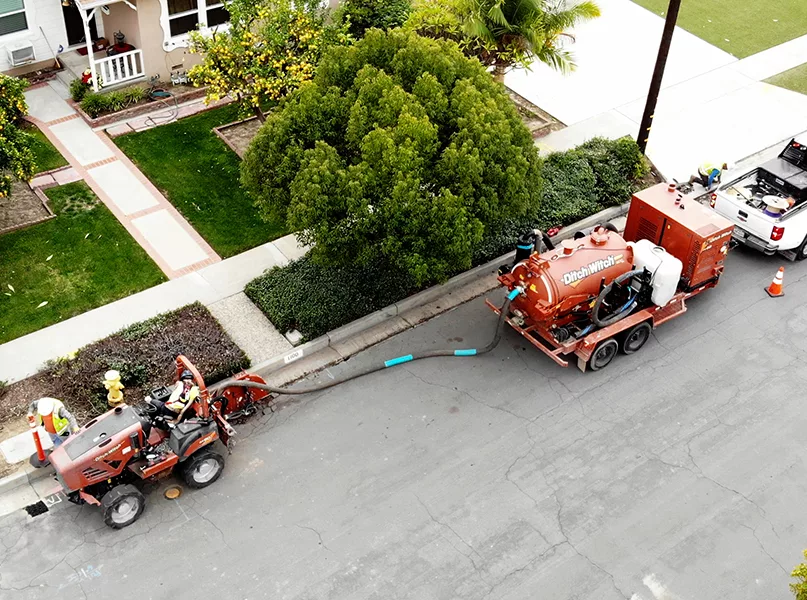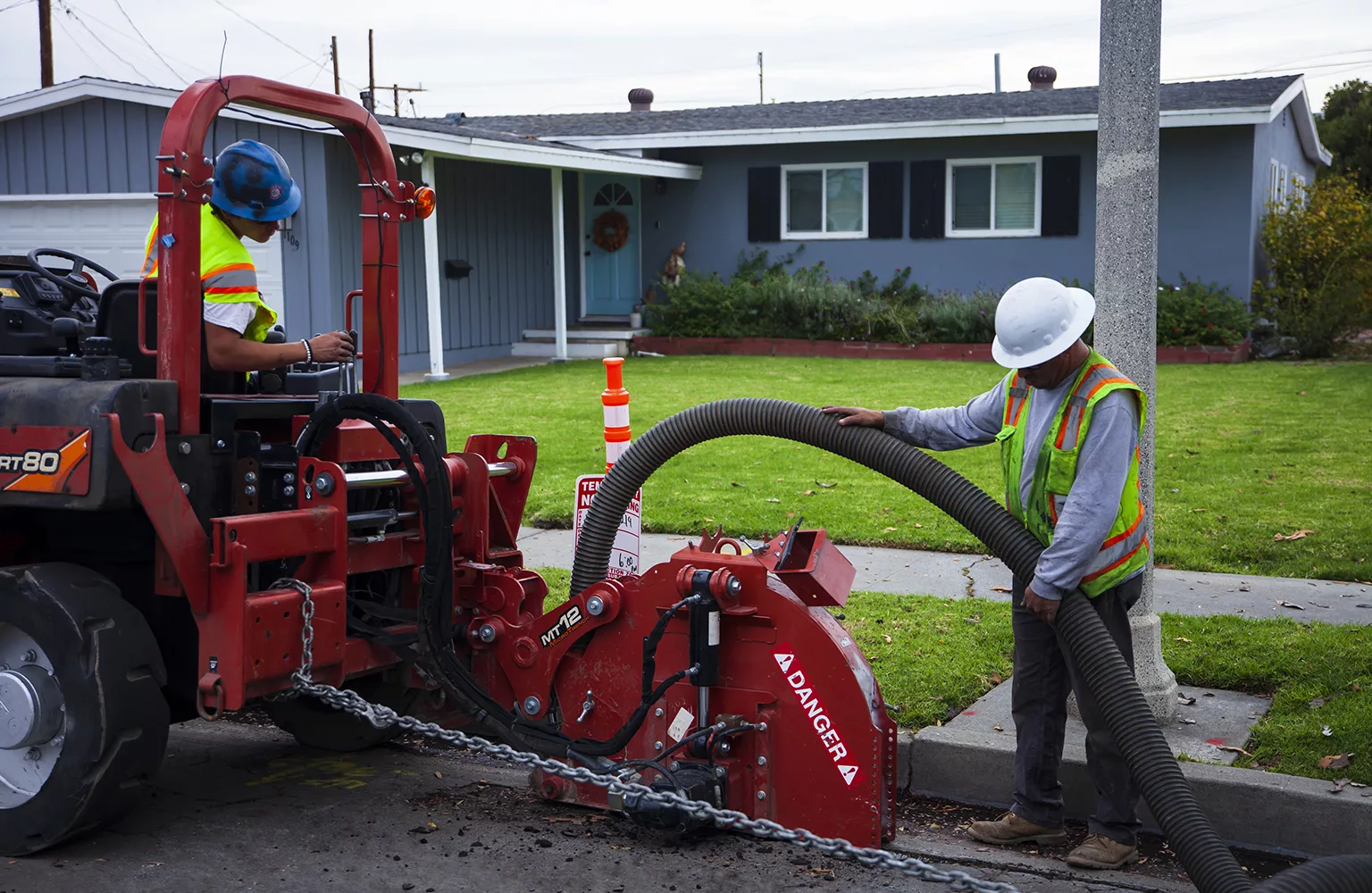As the US telecommunications industry continues to be monopolized by a handful of large corporations, SiFi Networks advocates for change. Mike Harris, co-Founder and Chairman, tells us more.
A NEW ERA OF EVOLUTION
Of the 103 million internet service users in the US today, around 82 million are currently dominated by just four major providers. SiFi Networks recognizes a need to change this.
The company seeks to establish an open-access internet network spread widely across major US cities to provide customers with wholesale access to several providers using a shared infrastructure.
“Essentially, we are offering a solution so that residential customers have the freedom of choice to use multiple providers without having to dig up the road every time they change provider. In short, that’s the concept of open-access,” opens Mike Harris, co-Founder and Chairman of SiFi Networks.
The company’s client base consists of small, medium, and large internet service providers (ISPs) who wish to minimize their construction risk whilst being able to reach more homes per dollar invested.
SiFi Networks’ governing principles of reversing the monopolization of US telecommunications (telecoms), favoring fair and non-discriminatory internet access, and providing a wide range of ISP choices, are influenced by the European model.
“These principles have been deployed within Europe for many years, originally in the UK, largely to break the monopoly of British Telecom (BT),” Harris reveals.
SiFi Networks directly employs over 100 staff, whilst subcontracting its construction, management, and design elements allows the company to provide employment opportunities for many more.
Primarily, the company’s goal is to implement complex, accessible telecoms network infrastructures across the US that move with the market and adhere to trends within the industry.
Having successfully built a network in California, SiFi Networks is well on its way to achieving its goal as the company anticipates going live in multiple cities across the East Coast.
BROADENING HORIZONS
Traditionally, both municipal and private ISPs have been required to be experts not only in broadband but also construction, as they must physically build their networks from the ground up before they are able to offer consumer services.
This has contributed to the US broadband industry being monopolized by providers with increased capital due to the considerable cost of construction.
However, SiFi Networks’ shared infrastructure approach, in which it privately funds, builds, and independently operates city-wide fiber networks (FiberCities™), allows ISPs to focus their resources on providing competitive packages for the consumer.
“We give the entire network an open-access status so that an ISP can gain access to all homes or businesses,” Harris explains.
Whilst smaller ISPs, supported by open-access, may not have exclusive access to their customers, having not constructed the infrastructure themselves, they do have the ability to connect more widely.
“If you are offering the best service for whatever type of ISP you are, you’ll be able to spend time on your marketing, price point, and bundle to attract customers. What’s more, you don’t have construction risk or capital locked up in infrastructure,” he emphasizes.
Therefore, open-access networks have allowed smaller service providers access to new geographies without being limited by the cost of construction.

CREATING CHOICE
In the face of considerable stagnation, SiFi Networks seeks to revive the US telecoms industry whilst increasing choices for its consumers.
Furthermore, unlike many ISPs, SiFi Networks is not influenced by affluence or wealth within an area. The company installs fiber for every single residence within a given locality so that each customer has the freedom to choose between providers.
“We don’t cherry pick areas. We build out whole cities,” Harris states confidently.
Across the US, the open-access internet model is still relatively unique, as most residents and businesses are still obliged to purchase internet services from a single company that operates as a monopoly.
However, having been provided a level playing field by SiFi Networks’ implementation of open-access, more US ISPs have begun to offer competitive fiber packages.
As seen in much of Europe, many ISPs now offer media bundles tailored to residents’ Internet of Things (IoT) needs or choose to promote affordable broadband prices.
“At SiFi Networks, we don’t compete with the ISPs; they compete between themselves to attract consumers. Ultimately, it’s the resident or business that chooses where they get their services from,” he expounds.
In enabling open-access networks in US cities, SiFi Networks offers consumers a broader choice of providers and promotes improved customer service.
“One thing open-access has driven is choice in the marketplace for its consumers. Above anything, customer service is always the winner,” Harris divulges.
A THREE-LAYER MODEL
SiFi Networks seeks to implement a three-layer model, also known as the hierarchical internetworking model, into its activities.
This model is intended to break down traditional monopolies within a broadband network and separate it into three independent entities.
The first layer, or core layer, consists only of the network itself and the high-speed broadband associated with it.
The second layer involves a third-party management company taking control of the fiber to allow the customer to choose freely between available broadband services.
“The management of this asset – or ‘second layer’ – is an entirely independent operation,” explains Harris.
Ultimately, versions of fiber can be turned on or off by the independent management company, depending on consumer choice.
The third and final layer is the ISP, which is responsible for the customer’s contract. To eliminate monopolies, this layer can never be involved in the management or ownership of the fiber asset itself.
“The fiber asset owner has committed to not being the ISP, as has the independent management organization. Therefore, it’s neutral, as there’s no vested reason for the consumer to favor one ISP over the other.”
By providing separation, layer-by-layer, SiFi Networks has created a neutral infrastructure that all homes can use.
“This means that ISPs must be on top of their game and in tune with what the customer wants. Having choice drives customer service,” Harris enthuses.

LOOKING FORWARD
As it anticipates securing further funding in Q1 of this year, SiFi Networks continues to expand and evolve.
“We expect to see the acceleration of active customers over the newly built networks, and we will see a number of other cities asking us to put their citizens on an open-access network,” comments Harris.
This comes after the company nears completion of open-access networks in Fullerton, Placentia, and Kenosha, which are pending an imminent launch. It also oversees eight more cities, which are in various stages of open-access construction, hoping to be completed in 2024.
Ultimately, as it grows, SiFi Networks seeks to modernize and diversify the US telecoms industry, which has been hampered by monopolization and limited choice for decades.
“There comes a point when the US internet service is not keeping up with the reality of today’s world,” Harris observes.
“Imagine you want some fruit, but the only thing being sold is plums. You don’t want plums, but you don’t have a choice; all you can have is plums,” he exemplifies.
“But then, imagine there’s also a bowl of apples alongside the plums. You make your choice, and that’s the empowerment.”
Thus, SiFi Networks believes that the secret to driving customer service is about offering an array of options, whilst empowering the consumer with autonomy and the ability to choose for themselves.
WHAT ARE THE BENEFITS OF OPEN-ACCESS?
- Focus on delivering, not digging: Open-access allows providers to focus on delivering great broadband services, as opposed to digging infrastructure.
- Don’t despair – dig once: Open-access models generally minimize disruption during the construction. Shared infrastructure means less construction and less maintenance, positively impacting the environment and quality of life.
- Low barriers to entry for service providers: Funded by private capital markets, open-access is a viable option for all ISPs, regardless of capital.
- Competition and customer choice: More competition means more customer choice, whilst users can switch easily between providers.
- Futureproof with smart cities: Technologies such as 5G cellular networks, smart energy grids, and intelligent buildings can all benefit from the fiber networks provided by open-access.







